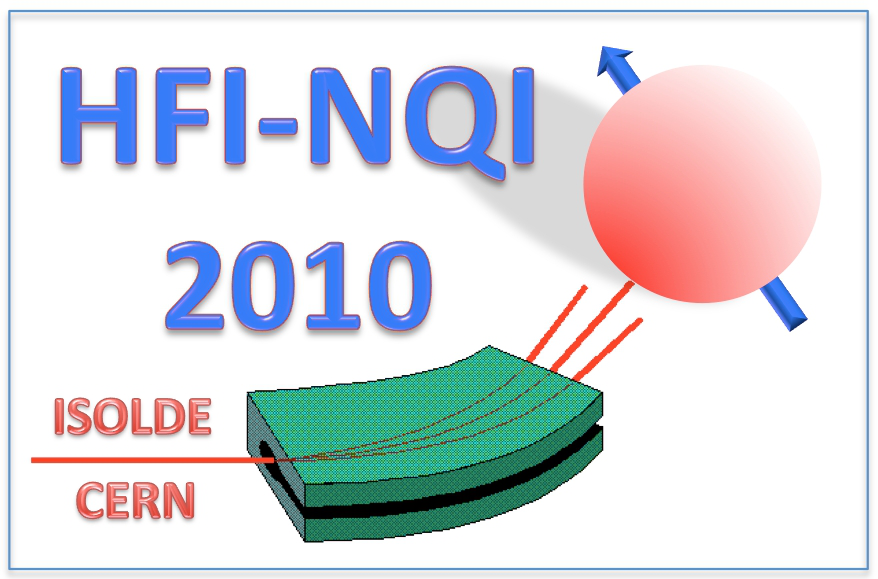Speaker
Description
Summary
Boracite Fe3B7O13(OH) is a new ion oxide synthesized by hydrothermal method [1]. The crystal structure is trigonal (R3cH) with the lattice constants of a=8.590Å and c=21.107Å (hexagonal notation) at room temperature. Iron ion, Fe2+, occupies a pentahedral site. Three pentahedrons share the upper corner, which is probably occupied by OH- ion [2,3], and thus three Fe2+ ions form a triangular cluster in the c-plane. The material is an antiferromagnet with TN=4.9K. Ising-like behavior is observed [1]. In order to investigate the local structure and the magnetic structure, we have applied 57Fe Mössbauer spectroscopy. The spectra were measured in conventional transmission geometry by using 57Co-in-Rh as the γ-ray source. The powdered specimen was used as an absorber.
The paramagnetic spectrum at 293K is shown in Fig.1. The spectrum is composed of a paramagnetic doublet with sharp line widths (0.24mm/s), indicating that there is only one crystallographic Fe site. The room-temperature value of isomer shift (IS) is 1.16mm/s, which indicates that the Fe ions are in high spin Fe2+ state. The quadrupole splitting (QS) is very large (3.21mm/s) due to the valence electron contribution. The spectrum at 4.2K, just below TN, is shown in Fig.2. The spectrum is a well-resolved hyperfine sextet with sharp line widths (0.30mm/s), indicating that the hyperfine field (Hhf) glows rather rapidly below TN. We can obtain the best fit curve with the parameters; IS=1.29mm/s, QS=3.52 mm/s Hhf=3.6T, asymmetry parameter η=0.5, and Euler angles θ=20º and φ=0º. By evaluating the principal axis of electric field gradient (EFG) from the lattice contribution, we can deduce that each three Fe2+ magnetic moment is directed from Fe2+ ion to OH- ion. Taking into account that the system is antiferromagnetic as a whole, a probable magnetic structure is 6-sublattice model, which is consistent with that derived from the static magnetic properties [1].
References
[1] H. Sato, et al., in preparation.
[2] D. Andreica, et al., Ferroelectrics, 204 (1997) 73.
[3] U. Werthmann, et al., Z.Kristallogr.215 (2000) 393.
| Please specify whether you would prefer an oral or poster contribution. | poster |
|---|
